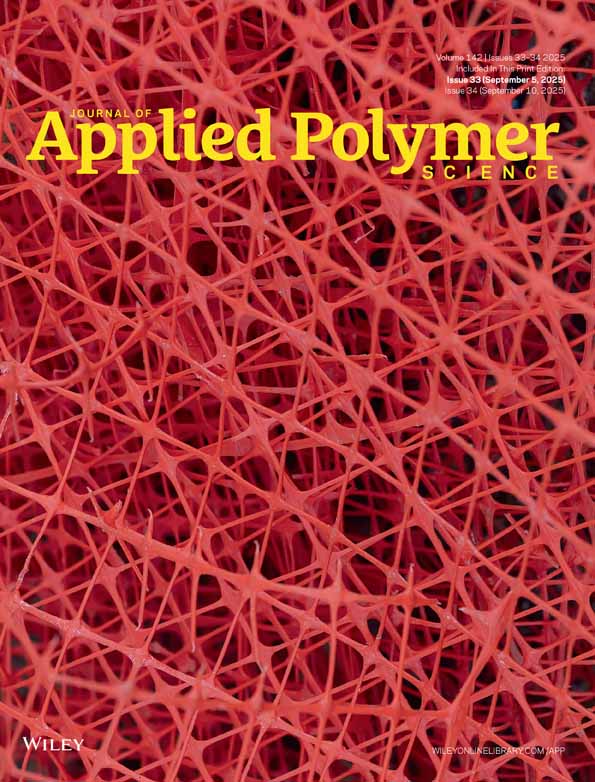Biodegradable polyurethane elastomers prepared from isocyanate-terminated poly(ethylene adipate), castor oil, and glycerol
Abstract
The curing reaction of tolylene-2,4-diisocyanate-terminated poly(ethylene adipate) (PEA-TDI) with a mixture of castor oil (CO) and glycerol (GO) with a NCO/OH ratio of 1.0 at 150°C gave crosslinked polyurethane (CO/GO-PU). All the polyurethanes were elastomeric materials at room temperature. The glass-transition temperature of the CO/GO-PU increased with decreasing CO/GO ratio. All the cured polyurethanes had a higher 5% weight loss temperature than PEA-TDI. The tensile strength and modulus of the polyurethanes increased with decreasing CO/GO ratio, and tensile residual strain after 300% elongation for all the CO/GO-PUs was almost 0. All the polyurethanes had biodegradability, when measured by a biochemical oxygen demand method in an aqueous medium using activated sludge. The rate of the biodegradation of the polyurethanes increased with an increase of CO/GO ratio. The crosslinked CO-PU showed much higher biodegradability than the linear PEA-TDI. © 2009 Wiley Periodicals, Inc. J Appl Polym Sci, 2010




